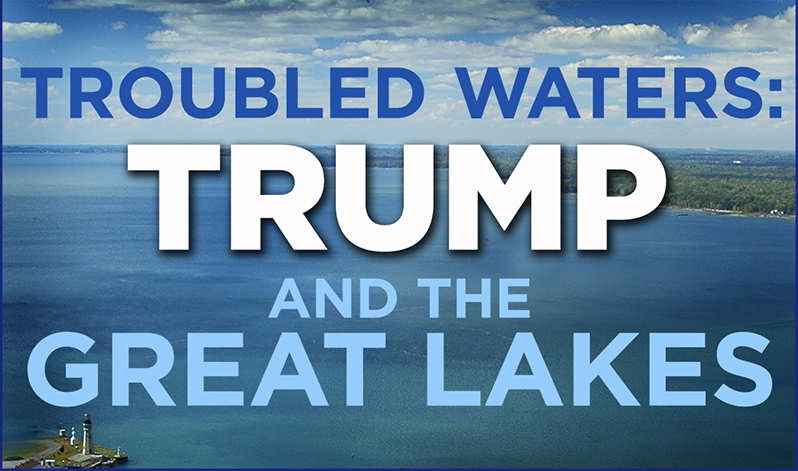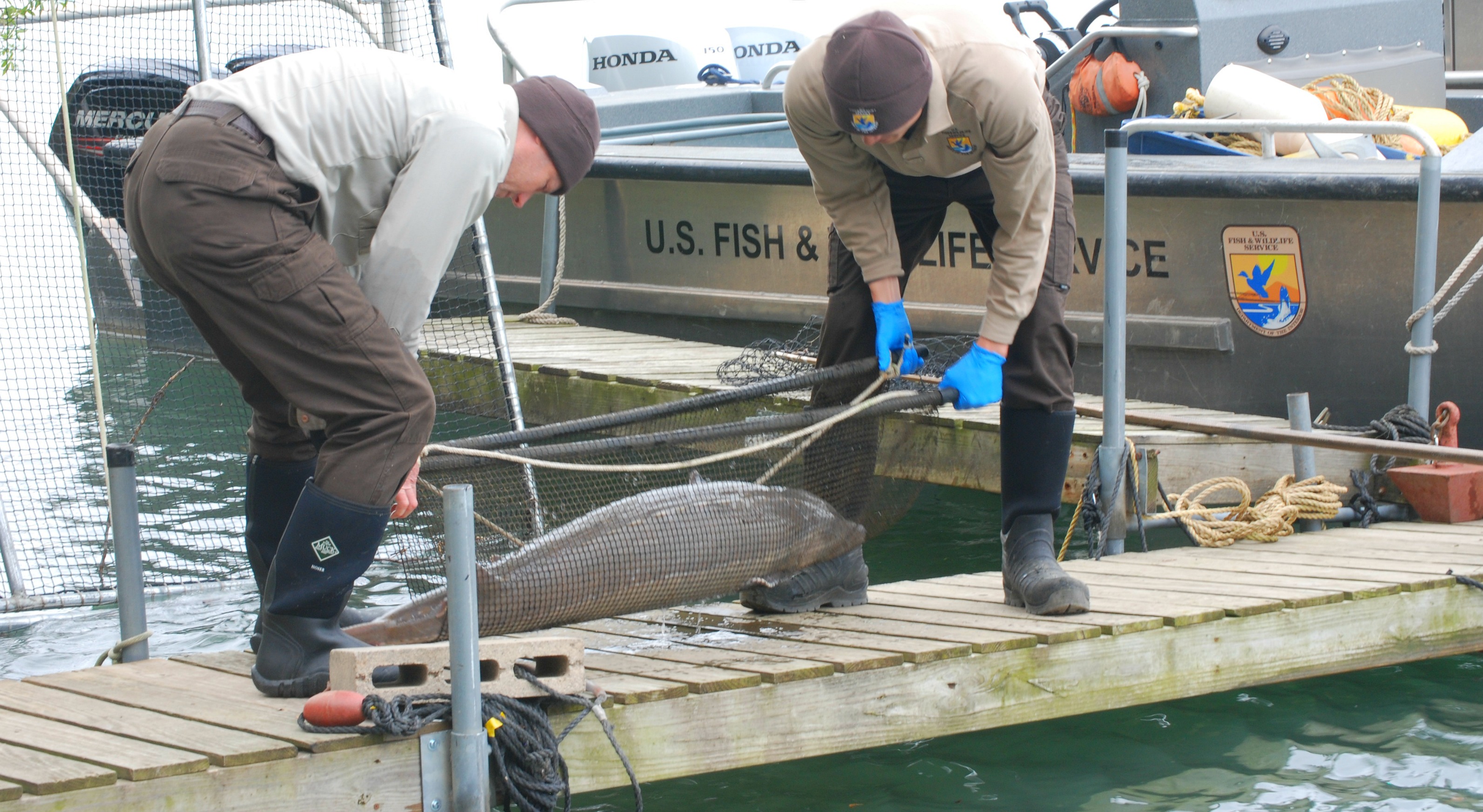Sturgeon Recovery Endangered on Lake Ontario
Sturgeon recovery efforts take place in various Great Lakes states.

On the shores of the lower Niagara River, about 10 miles from Niagara Falls, a group of biologists from the U.S. Fish and Wildlife Service prepare to examine the largest fish species in the Great Lakes region – the lake sturgeon.
“They were nearly wiped out, mostly due to over-fishing,” says biologist Dimitry Gorsky. “We have this remnant population that survived the over-fishing and habitat destruction.”

He and his crew take blood samples and insert a tracking device inside the fish. By monitoring the sturgeon, the group can gauge the health of the river and Lake Ontario.
“If there’s anything going on in the environment that is impacting reproduction, that could cause major problems for the population,” he says. “And so we want to make sure that by seeing successful reproduction over and over again we can say that the environment is in good shape.”
In his proposed 2018 budget, President Trump eliminated $300 million for the Great Lakes Restoration Initiative, which has been a major factor in the resurgence of the lake sturgeon.
Since 2010, Gorsky’s office has used money from the initiative. The group gets about $300,000 every year — for this and projects involving other Great Lakes fish like the lake trout.
Gorsky says the initiative has expanded their abilities. “The money helped us build capacity by replacing outdated boats and equipment, increasing our personnel. We have a larger staff than our offices have had before.”
Catherine Gatenby is a biologist and spokesperson for the lower great lakes region at the USFWS. She says this project aims to restore the sturgeon population so it can be fished again.
“Ultimately that’s what we all are doing, that are in conservation that work for the Fish and Wildlife Service,” she says. “Our job is to put ourselves out of a job, to restore the environment to a place where you don’t need us anymore.”
Sturgeon recovery efforts take place in various Great Lakes states, including Ohio along the Maumee River. And in other parts of New York, like on the Genesee River, which flows into Lake Ontario at Rochester.
Dawn Dittman of the U.S. Geological Survey works on a restocking project on the lower end of the Genesee. Her project has many sources of funding, including the Great Lakes Restoration Initiative.
If funding is pulled, she says, “only a portion of what we do now would not be possible, although we always look for alternative ways to fund the critical programs.”
The White House did not respond to requests for comment. But the president’s 2018 budget plan says states should be responsible for these projects.
